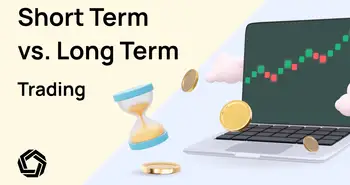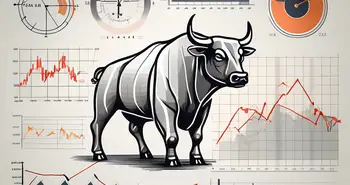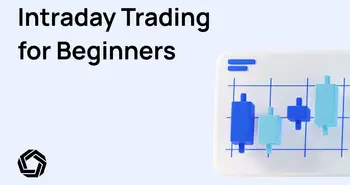Choosing the Right Strategy: Swing Trading vs. Day Trading Compared

The world of trading is as vast as it is exciting. With countless strategies and approaches to choose from, it can be a daunting task for both beginners and seasoned traders alike to select the right trading strategy. Today, we'll dive deep into two popular trading strategies: Swing Trading and Day Trading. We'll compare them, dissect their pros and cons, and hopefully, by the end of this discussion, you'll be better equipped to make an informed decision.
Understanding the Basics
Before we delve into the specifics, it's crucial to understand the basics of these two trading strategies. Both Swing Trading and Day Trading are forms of active trading, where traders aim to profit from short-term price fluctuations. However, the time frames, risk factors, and techniques involved in these strategies differ significantly.
As a seasoned trader with over 15 years of experience in the financial markets, I've had my fair share of triumphs and tribulations with both strategies. I remember my first foray into Day Trading; the adrenaline rush of making multiple trades within a single day was exhilarating. However, the high level of stress and constant market monitoring soon took its toll. I then transitioned to Swing Trading, which offered a more relaxed pace and allowed me to capitalize on trends over a few days or weeks. But enough about me, let's get back to the basics.
What is Swing Trading?
Swing Trading is a strategy that aims to capture gains in a stock (or any financial instrument) over a period of a few days to several weeks. Swing Traders primarily use technical analysis to look for trading opportunities, with the help of chart patterns and trends. They may also use fundamental analysis in conjunction with technical analysis to guide their trading decisions.
Swing Trading is typically considered a medium-term trading strategy. It's less frenetic than Day Trading, yet more active than Buy and Hold strategies. This balance makes Swing Trading an attractive option for those who can't monitor their trades every minute of the day but still want to be actively involved in managing their portfolio.
What is Day Trading?
Day Trading, on the other hand, involves buying and selling securities within the same trading day. All positions are closed out before the market closes, ensuring no positions are held overnight. Day Traders aim to profit from short-term price movements in highly liquid stocks or currencies.
Day Trading requires a high level of focus, discipline, and understanding of the markets. It's a full-time job, as traders need to constantly monitor price changes and make quick decisions. It can be stressful, but the potential for quick profits is a major draw for many traders.
Swing Trading vs. Day Trading: A Comparison
Now that we've covered the basics, let's delve deeper into the differences between Swing Trading and Day Trading. We'll compare them based on several key factors, including time commitment, profitability, risk, and stress levels.
Time Commitment
Day Trading is a time-intensive strategy. It requires constant monitoring of the markets and quick decision-making. If you have a full-time job or other major commitments, Day Trading may not be the best fit for you.
Swing Trading, on the other hand, requires less time. As trades are held for several days or weeks, there's no need to constantly watch the markets. This makes Swing Trading a more viable option for those with less time to dedicate to trading.
Profitability
Both Swing Trading and Day Trading have the potential to be profitable, but the profit margins can vary. Day Traders often make smaller profits on each trade, but they make many trades per day. Swing Traders, on the other hand, aim for larger price moves and therefore larger profits per trade, but they make fewer trades.
It's important to note that profitability depends on many factors, including skill level, market knowledge, and risk management. Regardless of the strategy you choose, it's crucial to have a solid understanding of the markets and a well-thought-out trading plan.
Risk and Stress Levels
Day Trading is generally considered riskier than Swing Trading. The high number of trades increases the potential for losses, and the fast-paced nature of Day Trading can lead to stress and emotional trading decisions.
Swing Trading, while still risky, tends to be less stressful. Trades are made over a longer time frame, which can reduce the potential for impulsive decisions. However, Swing Traders are exposed to overnight risk, as market conditions can change drastically from one day to the next.
Choosing the Right Strategy for You
Choosing between Swing Trading and Day Trading ultimately comes down to your personal preferences, lifestyle, and risk tolerance. If you thrive in fast-paced environments and have the time to dedicate to trading, Day Trading might be the right fit for you. If you prefer a slower pace and want to minimize stress, Swing Trading could be a better option.
Remember, there's no one-size-fits-all approach to trading. It's important to experiment with different strategies, learn from your experiences, and continually adapt your trading plan. As for me, I've found my sweet spot in Swing Trading, but that doesn't mean it's the best strategy for everyone. The key is to find a strategy that aligns with your trading goals and lifestyle.
FAQs
What is the main difference between Swing Trading and Day Trading?
The main difference lies in the time frame of trades. Day Trading involves making multiple trades within a single day, with no positions held overnight. Swing Trading, on the other hand, involves holding positions for several days to weeks.
Which is riskier, Swing Trading or Day Trading?
Day Trading is generally considered riskier due to the high number of trades and the fast-paced nature of the strategy. However, risk levels can vary depending on the trader's skill level, market knowledge, and risk management practices.
Can I do both Swing Trading and Day Trading?
Yes, many traders use a combination of both strategies. However, it's important to have a clear understanding of each strategy and to carefully manage your time and resources.
Remember, the journey to becoming a successful trader is a marathon, not a sprint. Take the time to learn, practice, and find the strategy that works best for you. Happy trading!
Ready to put your trading strategy into action? Whether you're leaning towards the flexibility of Swing Trading or the fast-paced world of Day Trading, Morpher.com is your gateway to a revolutionary trading experience. With zero fees, 24/7 trading, and the ability to leverage blockchain technology for infinite liquidity and fractional investing, Morpher is designed to elevate your trading game. Sign up now to take advantage of a platform that offers safety, control, and a unique trading experience with Virtual Futures. Plus, as a new member, you'll receive a Free Sign Up Bonus to kickstart your journey. Join Morpher today and transform the way you trade!

Disclaimer: All investments involve risk, and the past performance of a security, industry, sector, market, financial product, trading strategy, or individual’s trading does not guarantee future results or returns. Investors are fully responsible for any investment decisions they make. Such decisions should be based solely on an evaluation of their financial circumstances, investment objectives, risk tolerance, and liquidity needs. This post does not constitute investment advice.

Painless trading for everyone
Hundreds of markets all in one place - Apple, Bitcoin, Gold, Watches, NFTs, Sneakers and so much more.

Painless trading for everyone
Hundreds of markets all in one place - Apple, Bitcoin, Gold, Watches, NFTs, Sneakers and so much more.









